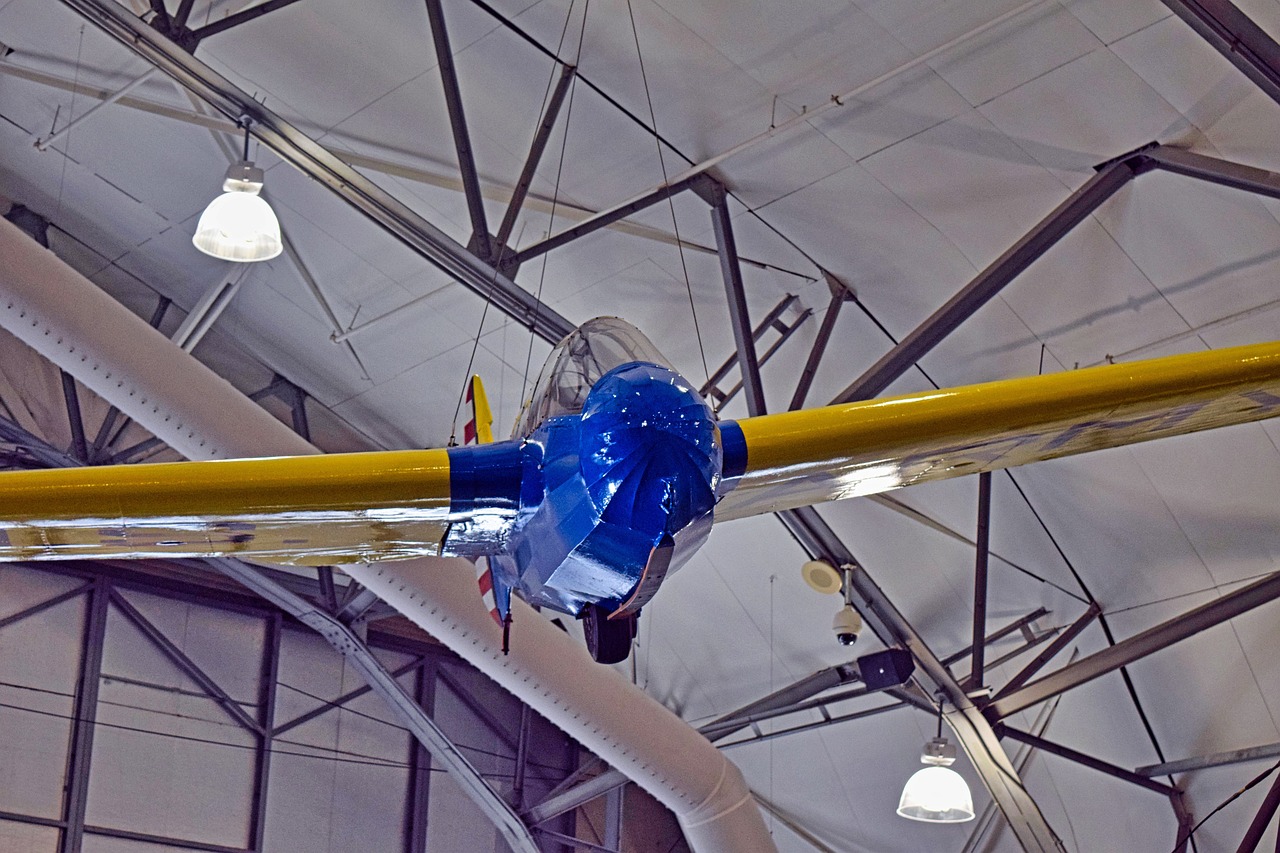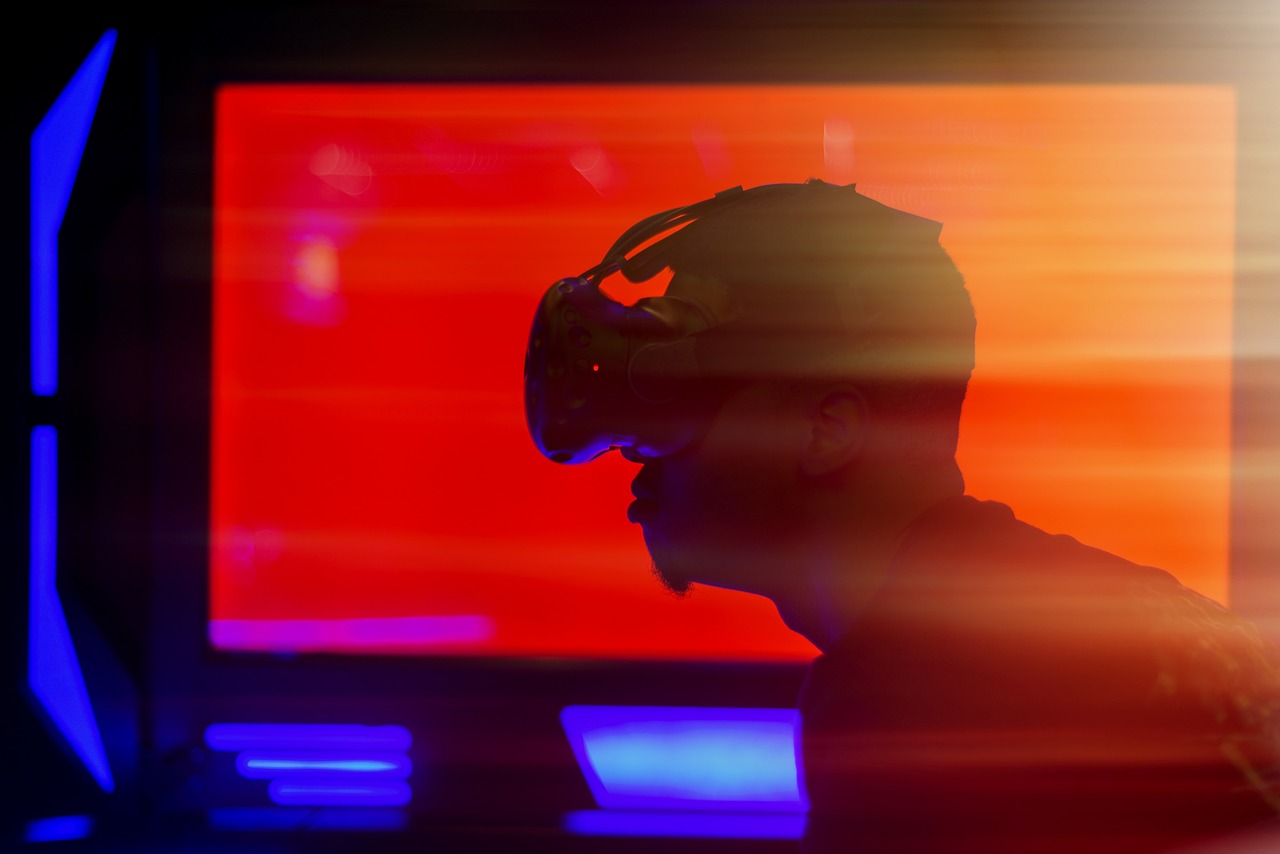The Role of VR in Enhancing Team Cohesion in Combat Units
In today's fast-paced and ever-evolving military landscape, the integration of Virtual Reality (VR) technology is proving to be a game-changer for combat units. Imagine a world where soldiers can step into a virtual battlefield, honing their skills and building camaraderie without ever leaving the training facility. This innovative approach not only enhances individual skills but also fosters a sense of team cohesion that is vital for mission success. In this article, we will explore how VR is revolutionizing the way combat units train together, improve their communication, and strengthen their bonds.
Understanding the significance of team cohesion in combat units is crucial, as it directly impacts mission success, morale, and overall effectiveness in high-pressure environments. When soldiers trust each other and can communicate effectively, they are more likely to perform well under stress. Think of it like a well-oiled machine; each part needs to function harmoniously for the entire system to work efficiently. In combat scenarios, this cohesion can mean the difference between life and death. By cultivating strong relationships among team members, units can enhance their operational effectiveness and resilience.
So, how does VR technology create such immersive environments? At its core, VR uses advanced hardware and software to simulate real-world scenarios. By donning VR headsets, soldiers can find themselves in realistic combat situations, complete with lifelike graphics and sound. This immersive experience allows them to practice their skills in a safe space, where mistakes can be made without real-world consequences. The technology promotes better teamwork and communication as soldiers navigate these virtual challenges together, reinforcing their bonds and sharpening their tactical skills.
Different types of VR training simulations are utilized in combat units, each designed to address specific skills and scenarios. These simulations enhance soldiers' ability to work together under stress, and they can be tailored to meet the unique needs of each unit. Here are some key types of VR training simulations:
- Combat Scenarios: These simulations allow units to practice tactical maneuvers and decision-making in a controlled environment, improving their response times and coordination in real-world situations.
- Team-building Exercises: VR fosters trust and collaboration among soldiers, helping them build relationships and improve group dynamics essential for effective teamwork.
Combat scenario simulations are particularly valuable as they allow units to practice tactical maneuvers and decision-making in a controlled environment. Imagine a squad navigating through a simulated urban landscape, where they must respond to enemy threats while coordinating their movements. This practice not only improves their response times but also enhances their ability to work as a cohesive unit. The ability to replay scenarios allows teams to analyze their performance, learn from mistakes, and refine their strategies, ultimately leading to better preparedness in real-world situations.
On the other hand, team-building exercises in VR serve to foster trust and collaboration among soldiers. These exercises can range from problem-solving tasks to virtual escape rooms, where soldiers must work together to achieve a common goal. Such activities help build relationships and improve group dynamics, which are essential for effective teamwork. Just like a sports team that practices together to develop synergy, combat units benefit immensely from these shared experiences, leading to stronger bonds and improved mission performance.
Evaluating the effectiveness of VR training on team cohesion involves assessing improvements in communication, trust, and overall performance during joint exercises and missions. By tracking metrics such as response times, decision-making accuracy, and soldier engagement levels, military leaders can gauge the impact of these innovative training methods. Regular feedback sessions and debriefings can further enhance the learning process, ensuring that teams continue to evolve and adapt to new challenges.
Despite its benefits, implementing VR technology in combat units presents challenges. These challenges include cost, accessibility, and the need for ongoing technical support and training for personnel. As with any cutting-edge technology, there are hurdles to overcome to ensure successful integration into existing training programs.
The financial implications of acquiring and maintaining VR systems can be significant, requiring careful budgeting and resource allocation within military budgets. It's essential for military planners to weigh the costs against the potential benefits, ensuring that investments in VR technology yield a high return in terms of enhanced training outcomes.
Moreover, technical limitations, such as hardware requirements and software compatibility, can hinder the effective integration of VR into existing training programs. Ongoing updates and maintenance are necessary to keep the systems running smoothly, necessitating a commitment to continuous improvement. As technology evolves, combat units must stay ahead of the curve, ensuring they are equipped with the latest tools to prepare for the challenges of modern warfare.
- What is VR training? VR training involves using virtual reality technology to simulate real-world scenarios for training purposes.
- How does VR enhance team cohesion? By providing immersive experiences that require collaboration, VR helps build trust and improve communication among team members.
- What are the challenges of implementing VR in combat units? Key challenges include cost, technical limitations, and the need for ongoing support and training.

The Importance of Team Cohesion
In the high-stakes world of combat, where every second counts and decisions can mean the difference between life and death, team cohesion emerges as a vital element. It’s not just about having a group of soldiers who can follow orders; it’s about creating a tight-knit unit that communicates seamlessly and trusts each other implicitly. Imagine a well-oiled machine, where each part knows its role and works in harmony with the others. This is the essence of team cohesion, and it plays a crucial role in ensuring mission success.
When soldiers operate in a cohesive team, they can respond to challenges more effectively. Consider a scenario where a unit encounters unexpected enemy fire. A cohesive team can quickly assess the situation, communicate clearly, and execute a coordinated response. In contrast, a fragmented team may struggle to react, leading to confusion and potentially dire consequences. Thus, the impact of team cohesion extends beyond mere camaraderie; it directly influences operational effectiveness.
Moreover, team cohesion contributes significantly to morale. Soldiers who feel connected to their teammates are more likely to stay motivated and engaged, even in the face of adversity. This emotional bond fosters resilience, enabling them to withstand the psychological pressures of combat. In high-pressure environments, where stress can easily overwhelm, the support of a cohesive team can make all the difference. It’s like having a safety net that catches you when you stumble, allowing you to regain your footing and keep moving forward.
Additionally, team cohesion enhances trust among soldiers. Trust is the bedrock of any effective team, and in combat, it becomes even more critical. Soldiers must rely on one another to perform their duties and watch each other's backs. When trust is established, individuals are more likely to share information, voice concerns, and collaborate on solutions. This open communication can lead to innovative tactics and strategies that improve overall performance.
To illustrate the importance of team cohesion, consider the following table that outlines key benefits:
| Benefit | Description |
|---|---|
| Improved Communication | Team members share information effectively, leading to better decision-making. |
| Enhanced Trust | Soldiers rely on each other, fostering a supportive environment. |
| Increased Morale | Cohesive teams maintain motivation, even in challenging situations. |
| Operational Effectiveness | Units perform better under pressure, executing plans swiftly and accurately. |
In conclusion, the importance of team cohesion in combat units cannot be overstated. It enhances communication, builds trust, boosts morale, and ultimately leads to greater operational effectiveness. As military organizations continue to evolve, understanding and fostering this cohesion will remain a top priority, ensuring that soldiers are not just a group of individuals, but a united front ready to face any challenge that comes their way.

How VR Technology Works
Virtual Reality (VR) technology operates on the fascinating principle of immersing users in a digitally created environment that feels incredibly real. Imagine stepping into a world where you can experience scenarios that are otherwise impossible or too dangerous to replicate in real life. This is precisely what VR offers to combat units. By utilizing advanced hardware and software, VR creates a 360-degree simulation that engages all of a soldier's senses, making training more effective and relatable.
At its core, VR technology employs a combination of head-mounted displays (HMDs), motion tracking sensors, and interactive interfaces. When soldiers don these HMDs, they are transported into a virtual realm where they can interact with their surroundings. The motion tracking sensors monitor their movements, ensuring that their actions in the virtual world correspond with their physical movements in reality. This synergy enhances the realism of the training experience, allowing soldiers to practice complex maneuvers without the risks associated with live training exercises.
One of the most compelling aspects of VR is its ability to replicate real-world scenarios. For instance, soldiers can engage in tactical simulations that mimic various combat situations, from urban warfare to reconnaissance missions. This level of immersion not only helps in honing their skills but also aids in developing critical decision-making abilities under pressure. Furthermore, the technology allows for repeated practice in a safe environment, which is crucial for mastering essential techniques and strategies.
Additionally, VR training can be tailored to meet the specific needs of different units. Various types of simulations can be designed to focus on:
- Combat scenarios: These simulations allow units to practice tactical maneuvers and decision-making in a controlled environment.
- Team-building exercises: VR can facilitate activities that foster trust and collaboration among soldiers, essential for effective teamwork.
- Emergency response drills: Soldiers can practice responding to unexpected situations, enhancing their adaptability and resilience.
Moreover, the data collected during VR training sessions can be invaluable. Instructors can analyze performance metrics, providing feedback that helps soldiers improve their skills over time. This data-driven approach ensures that training is not only immersive but also results-oriented, making it easier to track progress and identify areas needing improvement.
In conclusion, VR technology is revolutionizing the way combat units train by providing an engaging, realistic, and safe environment for soldiers to develop their skills. As this technology continues to evolve, its potential to enhance team cohesion and operational effectiveness will only grow, making it an essential tool in modern military training.

Types of VR Training Simulations
When it comes to enhancing team cohesion in combat units, the employed play a pivotal role. These simulations are not just about putting on a headset and diving into a virtual world; they are meticulously designed to replicate real-life scenarios that soldiers might face on the battlefield. By immersing soldiers in these environments, they can practice and hone their skills, ensuring that when the time comes to act, they are not just ready, but also synchronized as a cohesive unit.
One of the most common types of VR training simulations focuses on combat scenarios. In these simulations, soldiers can engage in tactical maneuvers, practice decision-making, and refine their response strategies in a controlled yet realistic setting. Imagine a virtual battlefield where every sound, sight, and sensation mirrors that of an actual combat zone. This level of immersion allows soldiers to react instinctively and collaboratively, improving their coordination and response times. For instance, a unit might practice an ambush scenario, where they must work together to outmaneuver an enemy force. The ability to replay these scenarios allows teams to learn from their mistakes and develop better strategies for future engagements.
Another essential category of VR training simulations encompasses team-building exercises. These exercises are crucial for fostering trust and collaboration among soldiers. In a high-stress environment, relationships can make or break a mission. By participating in VR team-building activities, soldiers can engage in problem-solving tasks that require them to communicate effectively and rely on one another's strengths. For example, a simulation might involve a rescue operation where team members must coordinate their actions to successfully extract a simulated casualty from a hostile area. Such experiences not only build camaraderie but also enhance the overall group dynamics necessary for effective teamwork.
Moreover, the beauty of VR training lies in its versatility. Different simulations can be tailored to address specific skills and scenarios, allowing units to customize their training based on their unique needs. This adaptability ensures that soldiers are not just going through the motions but are genuinely prepared for the challenges they will face. Whether it's a high-stakes hostage rescue or a complex logistics operation, VR training can provide the necessary tools to simulate these environments, making the training experience both realistic and impactful.
In conclusion, the available for combat units are diverse and specifically designed to enhance team cohesion. By engaging in combat scenarios and team-building exercises, soldiers can develop the skills necessary to work together under pressure. As technology continues to evolve, the potential for VR training to further revolutionize military training is boundless, paving the way for more effective and cohesive combat units.

Combat Scenarios
When it comes to preparing for the unpredictable nature of combat, combat scenario simulations are a game changer. These immersive experiences allow soldiers to engage in tactical maneuvers and decision-making exercises in a controlled environment that closely mimics real-world conditions. Imagine being able to practice a high-stakes mission without the actual risks involved! This not only enhances the soldiers’ skills but also builds a sense of camaraderie among team members, as they face challenges together.
In these simulations, units can encounter a variety of scenarios that test their ability to adapt and respond under pressure. For instance, they might need to navigate through urban warfare, conduct reconnaissance missions, or execute rescue operations. Each scenario is designed to push the boundaries of their teamwork, communication, and strategic planning. The beauty of VR is that it can replicate countless situations, providing soldiers with the opportunity to learn from their mistakes in a safe environment.
One of the key advantages of using VR for combat training is the immediate feedback it offers. Soldiers can review their performance and decisions in real-time, allowing for a deeper understanding of what worked and what didn’t. This reflective practice fosters a culture of continuous improvement, where learning becomes an integral part of the training process. In addition, the ability to simulate various environments—from dense forests to bustling city streets—ensures that soldiers are well-prepared for any situation they might encounter.
Moreover, these combat scenarios can be tailored to meet the specific needs of different units. For example, a special forces team may require advanced tactical training, while a logistics unit might focus on supply chain management during crises. By customizing scenarios, military trainers can ensure that every soldier is equipped with the necessary skills to perform effectively in their respective roles.
To illustrate the impact of combat scenario simulations, consider the following table that highlights key benefits:
| Benefit | Description |
|---|---|
| Enhanced Skill Development | Soldiers practice tactical maneuvers and improve decision-making abilities. |
| Improved Team Dynamics | Fosters trust and collaboration among team members, essential for mission success. |
| Realistic Training | Simulates various combat environments and scenarios for comprehensive preparation. |
| Immediate Feedback | Allows for real-time performance assessment and learning opportunities. |
In conclusion, combat scenario simulations are revolutionizing the way military units train for real-life challenges. By providing a safe yet realistic environment for soldiers to hone their skills, VR technology not only enhances individual capabilities but also strengthens team cohesion. As these soldiers navigate complex scenarios together, they build trust and communication skills that are vital for success on the battlefield.
- What are combat scenario simulations? Combat scenario simulations are immersive training exercises using VR technology to replicate real-world combat situations.
- How do these simulations improve team cohesion? They foster collaboration and communication among soldiers as they work together to solve problems and make tactical decisions.
- Can VR training replace traditional methods? While VR training is highly effective, it complements traditional training methods rather than completely replacing them.
- What are the main challenges of implementing VR in combat training? Key challenges include cost, technical limitations, and the need for ongoing support and training for personnel.

Team-building Exercises
Team-building exercises in virtual reality (VR) are not just about having fun; they are a crucial element in forging strong bonds among soldiers. Imagine stepping into a virtual world where the stakes are high, and your teammates rely on you to make split-second decisions. These exercises create a unique environment that encourages trust, communication, and collaboration. In VR, soldiers can engage in realistic scenarios that mimic the challenges they might face in actual combat situations. This immersive experience allows them to practice essential skills in a safe yet challenging setting.
One of the most significant advantages of VR team-building exercises is their ability to break down barriers. When soldiers don headsets and enter a virtual space, they leave behind the physical limitations of their environment. This shift can lead to enhanced interactions that might not occur in traditional training settings. For instance, a soldier who is usually shy might find their voice in a virtual mission, leading to improved team dynamics and a more cohesive unit overall.
Moreover, these exercises can be tailored to address specific weaknesses within the team. For example, if a unit struggles with communication during high-pressure situations, VR simulations can be designed to focus on that aspect. Soldiers can practice relaying information, strategizing in real-time, and responding to unexpected challenges, all while receiving immediate feedback on their performance. This iterative learning process is invaluable, as it allows teams to continuously improve and adapt.
In the realm of VR, the possibilities for team-building exercises are virtually endless. Some examples include:
- Virtual Escape Rooms: Teams must work together to solve puzzles and escape within a time limit, fostering collaboration and problem-solving skills.
- Mission Simulations: Units can engage in specific combat scenarios where they must coordinate their actions to achieve a common goal.
- Role-Playing Exercises: Soldiers can assume different roles within a team, helping them understand various perspectives and improve empathy among team members.
By participating in these VR exercises, soldiers not only enhance their individual skills but also cultivate a sense of camaraderie that is vital in combat situations. The bonds formed in these virtual environments can translate into real-world trust, making it easier for team members to rely on each other when it matters most. Ultimately, VR team-building exercises are a powerful tool for enhancing team cohesion, ensuring that soldiers are not just a group of individuals but a unified force ready to face any challenge together.
- What are the benefits of VR team-building exercises? VR team-building exercises enhance trust, communication, and collaboration among soldiers, allowing them to practice essential skills in a realistic yet safe environment.
- How do VR exercises differ from traditional training? VR exercises provide an immersive experience that can simulate high-pressure scenarios, allowing soldiers to develop skills that may not be practiced as effectively in traditional training settings.
- Are VR team-building exercises cost-effective? While there are initial costs associated with VR technology, the long-term benefits in terms of improved team performance and mission success can outweigh these expenses.

Measuring the Impact of VR Training
When it comes to assessing the effectiveness of VR training on team cohesion in combat units, the process is as intricate as it is essential. Just like a well-oiled machine, every component must work in harmony to gauge improvements accurately. One of the primary metrics for evaluation is the enhancement of communication skills. In a combat scenario, the ability to convey information swiftly and clearly can mean the difference between success and failure. By analyzing communication patterns before and after VR training sessions, military leaders can pinpoint specific areas of growth.
Furthermore, trust among team members is another crucial element that VR training aims to strengthen. Trust is like the glue that holds a team together, especially in high-stakes environments. To measure this, units can conduct pre- and post-training surveys focusing on interpersonal relationships and perceived reliability within the team. The results can provide insightful data on how VR simulations foster a sense of camaraderie and mutual support.
Another method for measuring the impact of VR training is through performance assessments during joint exercises and missions. By comparing the outcomes of missions before and after implementing VR training, commanders can evaluate improvements in overall performance. Metrics such as response time, decision-making accuracy, and tactical execution can be quantified, offering a clear picture of the training's efficacy.
To give you a clearer understanding, here’s a table that outlines some key metrics used in measuring the impact of VR training:
| Metric | Before VR Training | After VR Training |
|---|---|---|
| Communication Clarity | 75% | 90% |
| Team Trust Level | 65% | 85% |
| Response Time (seconds) | 12 seconds | 8 seconds |
| Decision-Making Accuracy | 70% | 88% |
As you can see from the table, the improvements are significant. The data speaks volumes about how VR training can transform a combat unit's dynamics. The metrics not only highlight the tangible benefits of the training but also emphasize the importance of continuous assessment and refinement of training programs.
In summary, measuring the impact of VR training is not just about crunching numbers; it's about understanding the profound effects on team cohesion and performance. By focusing on communication, trust, and overall effectiveness, military units can harness the power of VR to build stronger, more cohesive teams ready to face any challenge head-on.
- What is VR training? VR training involves using virtual reality technology to simulate real-life scenarios for training purposes, enhancing skills and teamwork.
- How does VR improve team cohesion? VR creates immersive experiences that encourage collaboration, communication, and trust-building among team members.
- What metrics are used to measure the effectiveness of VR training? Key metrics include communication clarity, trust levels, response times, and decision-making accuracy.
- Are there challenges in implementing VR training? Yes, challenges include costs, technical limitations, and the need for ongoing support and training.

Challenges in Implementing VR
As promising as virtual reality (VR) technology is for enhancing team cohesion in combat units, its implementation is not without challenges. One of the most significant hurdles is the cost associated with acquiring and maintaining VR systems. Military budgets are often tight, and allocating funds for cutting-edge technology can be a daunting task. It's essential for decision-makers to weigh the benefits of VR against its financial implications, ensuring that every dollar spent translates into improved training outcomes.
Moreover, the technical limitations of VR systems can pose substantial barriers. For instance, the hardware required for immersive experiences can be expensive and may not always be compatible with existing training infrastructure. This can lead to a fragmented training experience, where some units benefit from advanced simulations while others are left behind. Additionally, the software must be regularly updated to ensure that it meets the evolving needs of combat training, which requires ongoing technical support and personnel training.
Another challenge lies in the accessibility of VR technology. Not all combat units have equal access to the necessary equipment or facilities. This disparity can lead to inconsistencies in training quality among different units, which is particularly concerning when considering the importance of teamwork in high-stakes environments. To combat this issue, military organizations must prioritize equitable access to VR training tools, ensuring that every soldier can benefit from these innovative training methods.
Furthermore, there is a need for ongoing technical support and training for personnel who will be using these systems. Soldiers and trainers must be adequately equipped with the knowledge and skills to operate VR technology effectively. This requirement can strain already limited resources and necessitate additional time and effort to train personnel, diverting attention from other critical training areas.
In summary, while the advantages of VR in enhancing team cohesion are clear, the challenges associated with its implementation cannot be overlooked. Addressing these issues will require a concerted effort from military leaders, technology providers, and training personnel to ensure that VR technology can be fully leveraged to improve the effectiveness and readiness of combat units.
- What are the primary benefits of using VR in military training?
VR enhances realism in training, improves team dynamics, and allows for safe practice of high-stakes scenarios. - How does VR improve communication among soldiers?
Immersive simulations enable soldiers to practice communication skills in realistic settings, fostering better collaboration. - What are the costs associated with implementing VR technology?
The costs can vary greatly, including initial setup, maintenance, and the need for ongoing technical support. - Are there specific types of VR simulations used in training?
Yes, simulations can range from combat scenarios to team-building exercises, each tailored to develop specific skills.

Cost Considerations
When it comes to the implementation of Virtual Reality (VR) technology in combat units, one cannot overlook the significant financial implications involved. Investing in VR systems is not merely a one-time expenditure; it represents a long-term commitment that requires careful budgeting and resource allocation. The costs associated with acquiring the latest VR hardware and software can be substantial, often leading military decision-makers to weigh their options meticulously.
To better understand the financial landscape, it's essential to break down the costs into several categories:
- Hardware Costs: This includes the purchase of VR headsets, motion sensors, and computing equipment capable of running sophisticated simulations. High-quality hardware is crucial for creating immersive experiences, but it often comes with a hefty price tag.
- Software Development: Custom software tailored to specific training scenarios may be necessary. This could involve hiring developers or purchasing licenses for existing programs, both of which can add to the overall cost.
- Maintenance and Upgrades: Like any technology, VR systems require ongoing maintenance and periodic upgrades to ensure they remain functional and relevant. This includes software updates, hardware repairs, and potential replacements.
Moreover, the need for technical support cannot be overstated. Personnel must be trained not only to use the VR systems but also to troubleshoot any issues that arise. This training incurs additional costs and time, further complicating the budget landscape.
In light of these factors, military organizations must carefully consider the return on investment (ROI) associated with VR technology. While the initial costs may be high, the potential benefits in terms of enhanced team cohesion, improved communication, and overall operational effectiveness could justify the expenditure. Ultimately, the decision to implement VR training should be based on a thorough analysis of both the immediate financial implications and the long-term strategic advantages it offers.
- What are the main costs associated with VR technology in combat units? The main costs include hardware and software acquisition, maintenance, upgrades, and training personnel to use the systems effectively.
- Is VR technology worth the investment for military training? While the initial costs can be significant, the potential for improved team cohesion and operational effectiveness may provide a strong return on investment.
- How does VR training impact team dynamics? VR training fosters collaboration and communication, which are essential for effective teamwork in high-pressure environments.

Technical Limitations
When we talk about the integration of Virtual Reality (VR) into combat training, it’s essential to recognize the that pose challenges to its implementation. Despite the incredible potential that VR holds for enhancing team cohesion and training effectiveness, various factors can impede its seamless adoption.
First and foremost, let's consider the hardware requirements. High-quality VR systems demand significant processing power and advanced graphics capabilities. This means that not all military units may have access to the latest technology, which can create disparities in training effectiveness. Imagine trying to conduct a high-stakes training exercise with outdated equipment; it’s like trying to race a sports car with a bicycle. The experience and outcomes would be drastically different.
Additionally, software compatibility can be a major hurdle. VR training programs must be compatible with existing military training systems and protocols. If the software isn’t up to par, it could lead to frustrating experiences for soldiers who are trying to learn and adapt. This is particularly problematic when you consider that many combat units rely on a variety of systems to conduct their operations. The integration of new VR software must be carefully planned to ensure it meshes well with these existing frameworks.
Moreover, ongoing updates and maintenance are essential for keeping VR systems functional and relevant. Technology evolves rapidly, and what works today may not be effective tomorrow. This creates a continuous cycle of investment in both time and resources, which can be challenging for military budgets that are already stretched thin. Imagine investing in a cutting-edge training tool only to find out that it requires frequent upgrades, leading to additional costs and downtime.
Another significant limitation is the training of personnel. Not only do soldiers need to learn how to use the VR systems, but instructors must also be proficient in operating and troubleshooting the technology. This can lead to a steep learning curve, especially for those who may not be tech-savvy. The effectiveness of VR training hinges on the ability of both soldiers and trainers to adapt to this new medium, and any gaps in knowledge can hinder the overall training experience.
In summary, while VR technology offers exciting possibilities for enhancing team cohesion in combat units, its implementation is not without challenges. Addressing hardware requirements, ensuring software compatibility, maintaining systems, and training personnel are all critical components that must be managed effectively. Overcoming these technical limitations will be key to unlocking the full potential of VR in military training environments.
- What are the main benefits of using VR in military training? VR provides immersive experiences that enhance learning, improve teamwork, and simulate real-world scenarios effectively.
- How does VR technology improve communication among soldiers? By engaging in realistic simulations, soldiers can practice communication strategies in high-pressure situations, leading to better collaboration.
- What challenges does the military face in adopting VR technology? Key challenges include hardware requirements, software compatibility, ongoing maintenance, and the need for skilled personnel to operate the systems.
- Can VR training replace traditional training methods? While VR is a powerful tool, it is best used as a complement to traditional training methods, providing unique experiences that enhance overall preparedness.
Frequently Asked Questions
- What is the significance of team cohesion in combat units?
Team cohesion is essential in combat units as it directly influences mission success, morale, and overall effectiveness. When soldiers trust and communicate well with each other, they can respond more efficiently to high-pressure situations, which is crucial in combat scenarios.
- How does VR technology enhance training for soldiers?
VR technology creates immersive simulations that mimic real-world environments. This allows soldiers to practice tactical maneuvers and decision-making in a safe setting, which promotes better teamwork and communication skills. Essentially, it's like playing a video game that prepares them for actual combat!
- What types of VR training simulations are commonly used?
There are various types of VR training simulations, including combat scenarios and team-building exercises. Combat scenarios help units practice tactical maneuvers, while team-building exercises focus on fostering trust and collaboration among soldiers.
- How is the impact of VR training measured?
The effectiveness of VR training on team cohesion is evaluated by assessing improvements in communication, trust, and overall performance during joint exercises and missions. If soldiers perform better together after VR training, it indicates a positive impact.
- What challenges are faced when implementing VR in combat units?
Implementing VR technology comes with challenges such as high costs, accessibility issues, and the need for ongoing technical support. Military budgets must carefully consider these factors to ensure successful integration of VR systems into training programs.
- Are there any technical limitations to using VR technology?
Yes, technical limitations such as hardware requirements and software compatibility can hinder effective integration of VR into existing training programs. This often necessitates regular updates and maintenance to keep the systems running smoothly.



















